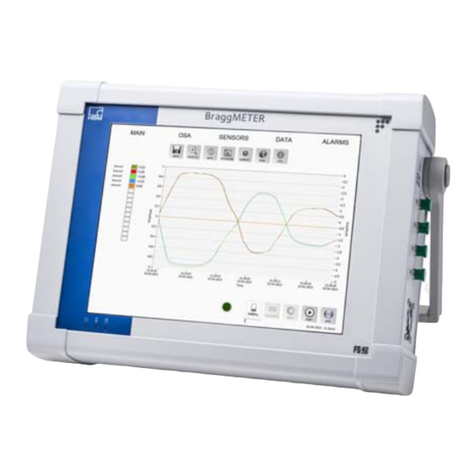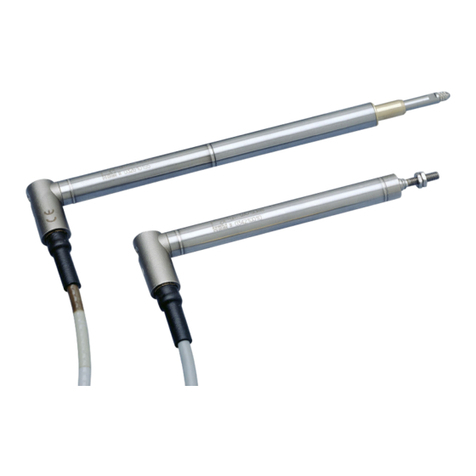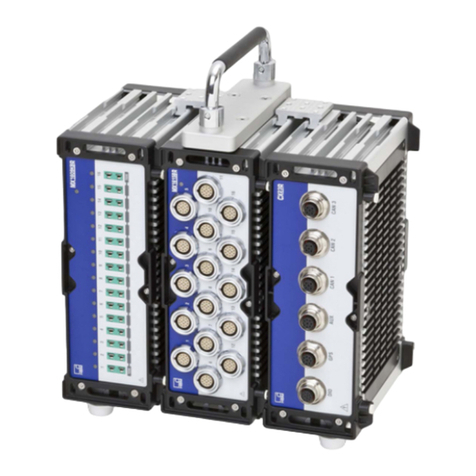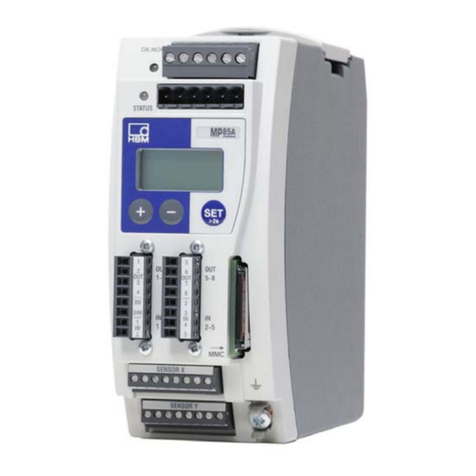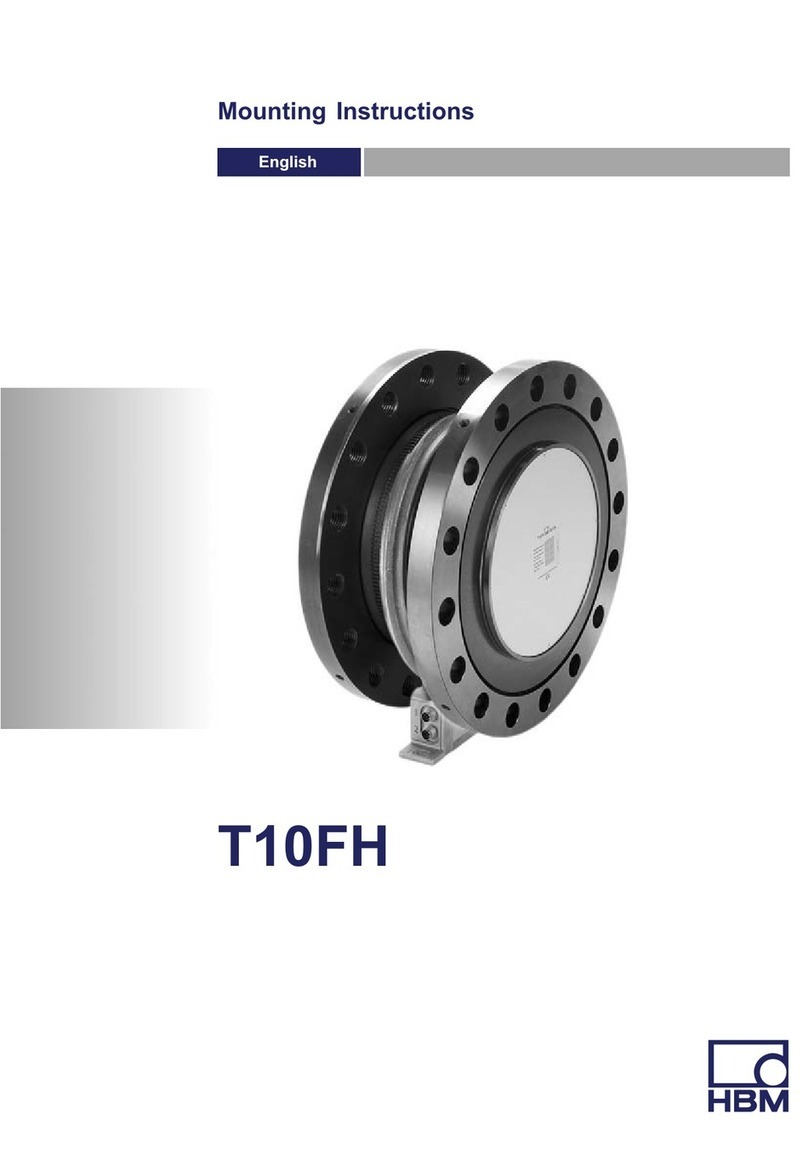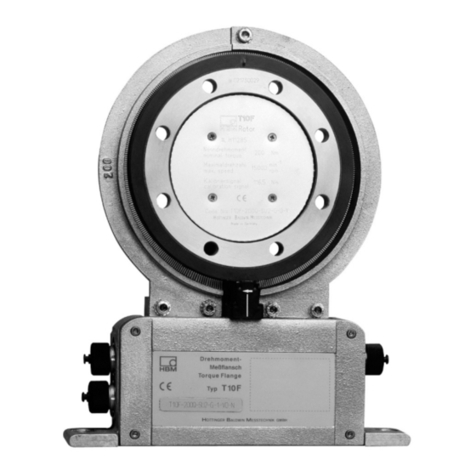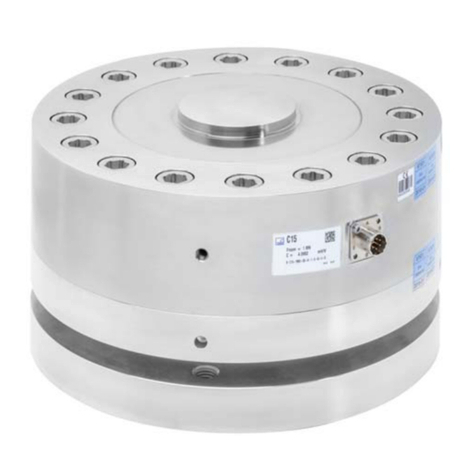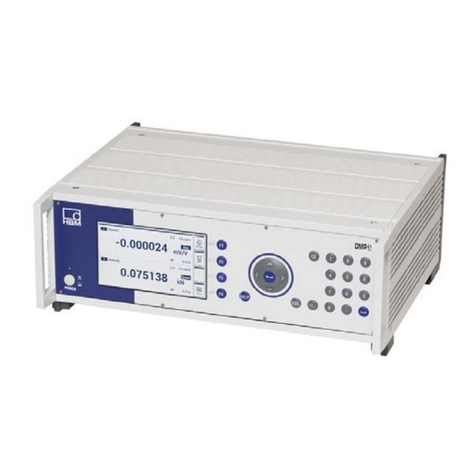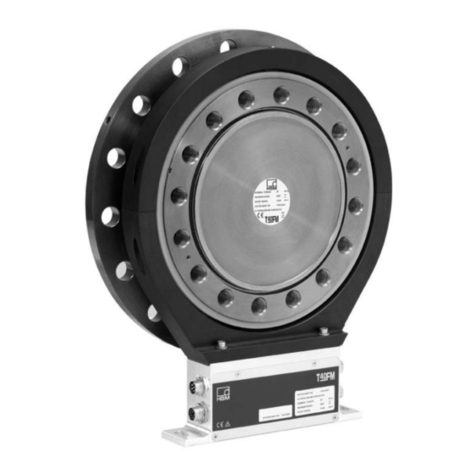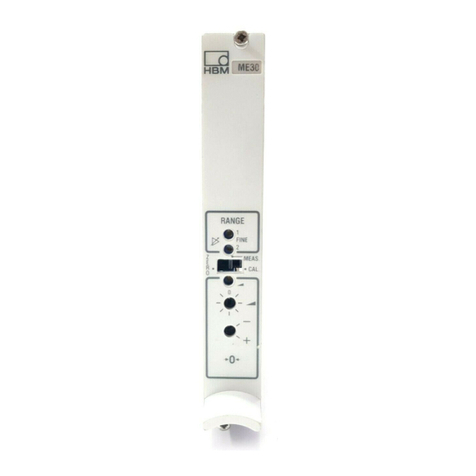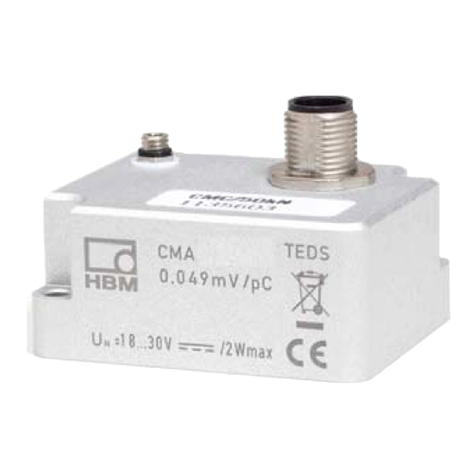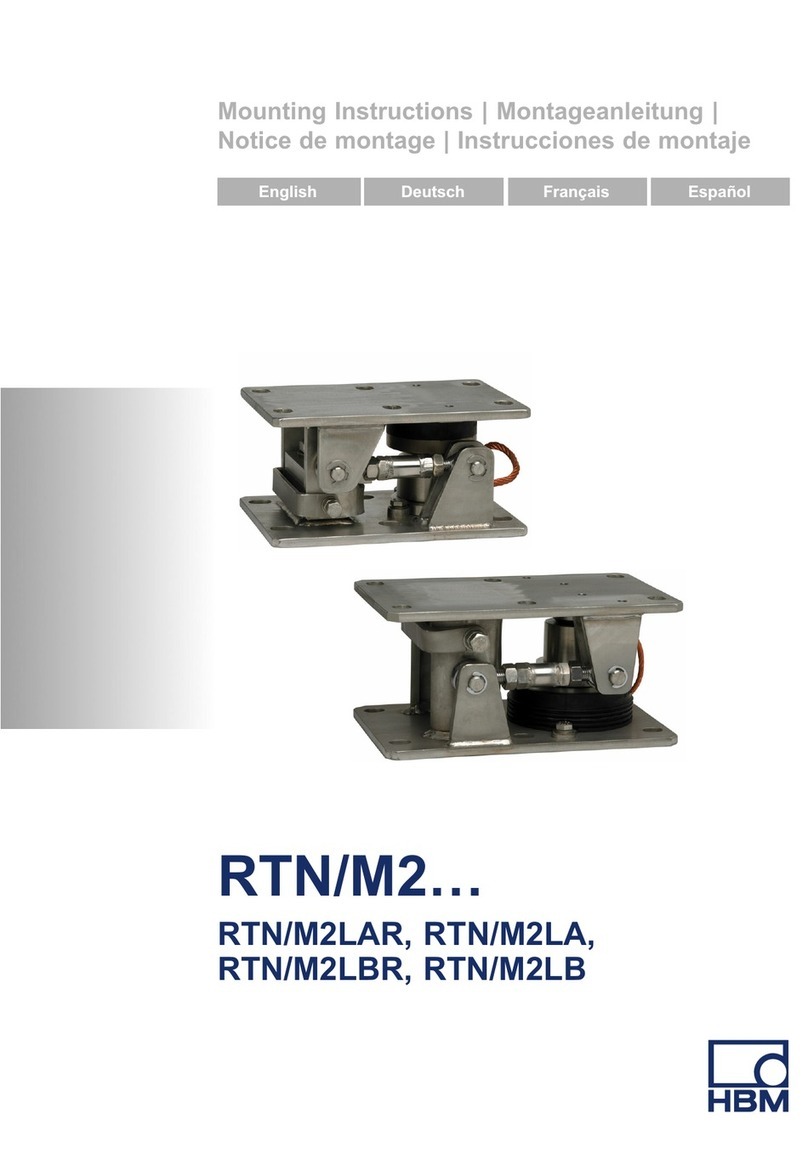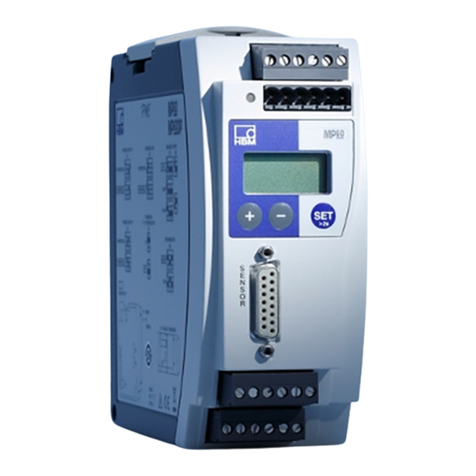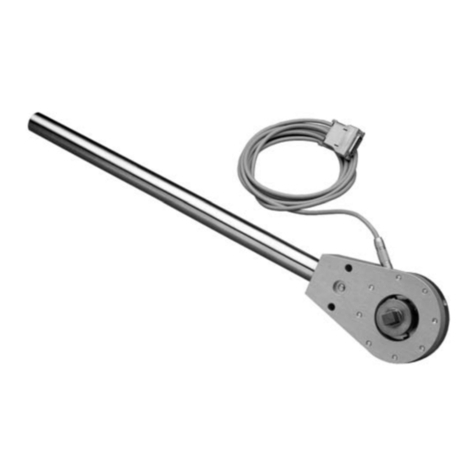
4MC3
HBM A1705−3.2 en/de/fr
Safety instructions
Appropriate use
The MC3 with the connected transducers may be used for measurement and
directly related control and regulation tasks, only. Any other use is not ap-
propriate.
To ensure safe operation, the MC3 may only be used according to the specifi-
cations given in this manual. When using the transducer, the legal and safety
regulations for the respective application must also be observed. The same
applies if accessories are used.
General dangers of failing to follows the safety instructions
The MC3 complies with the state of the art and is operationally reliable. If the
device is used and operated inappropriately by untrained personnel, residual
dangers might develop.
Any person charged with device installation, operation, maintenance or repair
must in any case have read and understood the operating manual and the
safety instructions, in particular.
Conditions on site
Protect the equipment from direct contact with water.
Maintenance and cleaning
The MC3 is maintenance-free. Please note the following when cleaning the
housing:
−Before cleaning, disconnect the equipment from the power supply.
−Clean the housing with a soft, slightly damp (not wet!) cloth. Never use
solvents, since these could damage the labelling.
−When cleaning, ensure that no liquid gets into the equipment or connec-
tions.
Remaining dangers
The MC3 scope of performance and supply covers part of the measuring-
technology, only. The plant designer/constructor/operator must in addition de-
sign, realise and take responsibility for the measuring-system’s safety such
that potential remaining dangers are minimized. The respective regulations
must in any case be observed. Residual dangers regarding the measuring
system must be specified explicitly.












